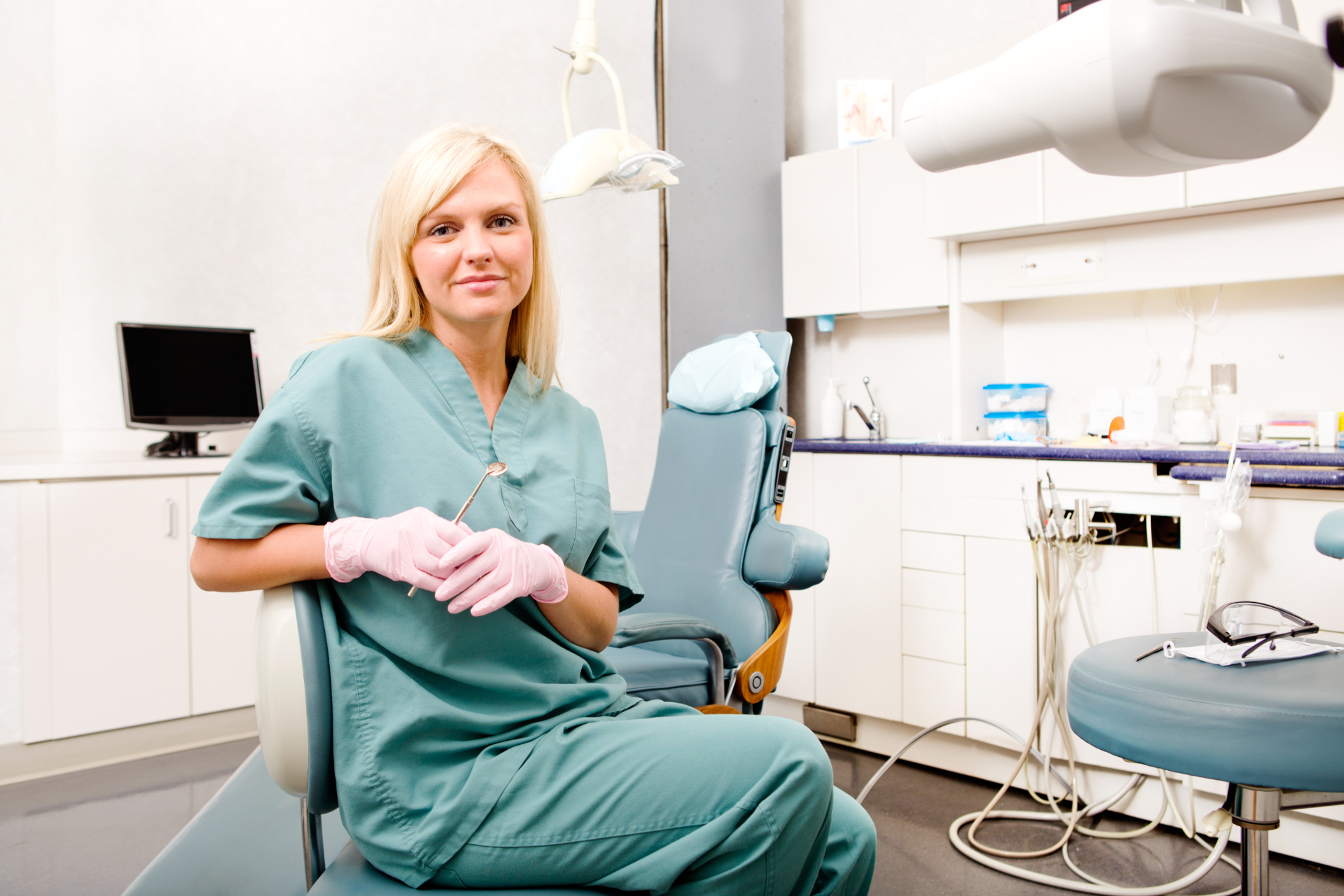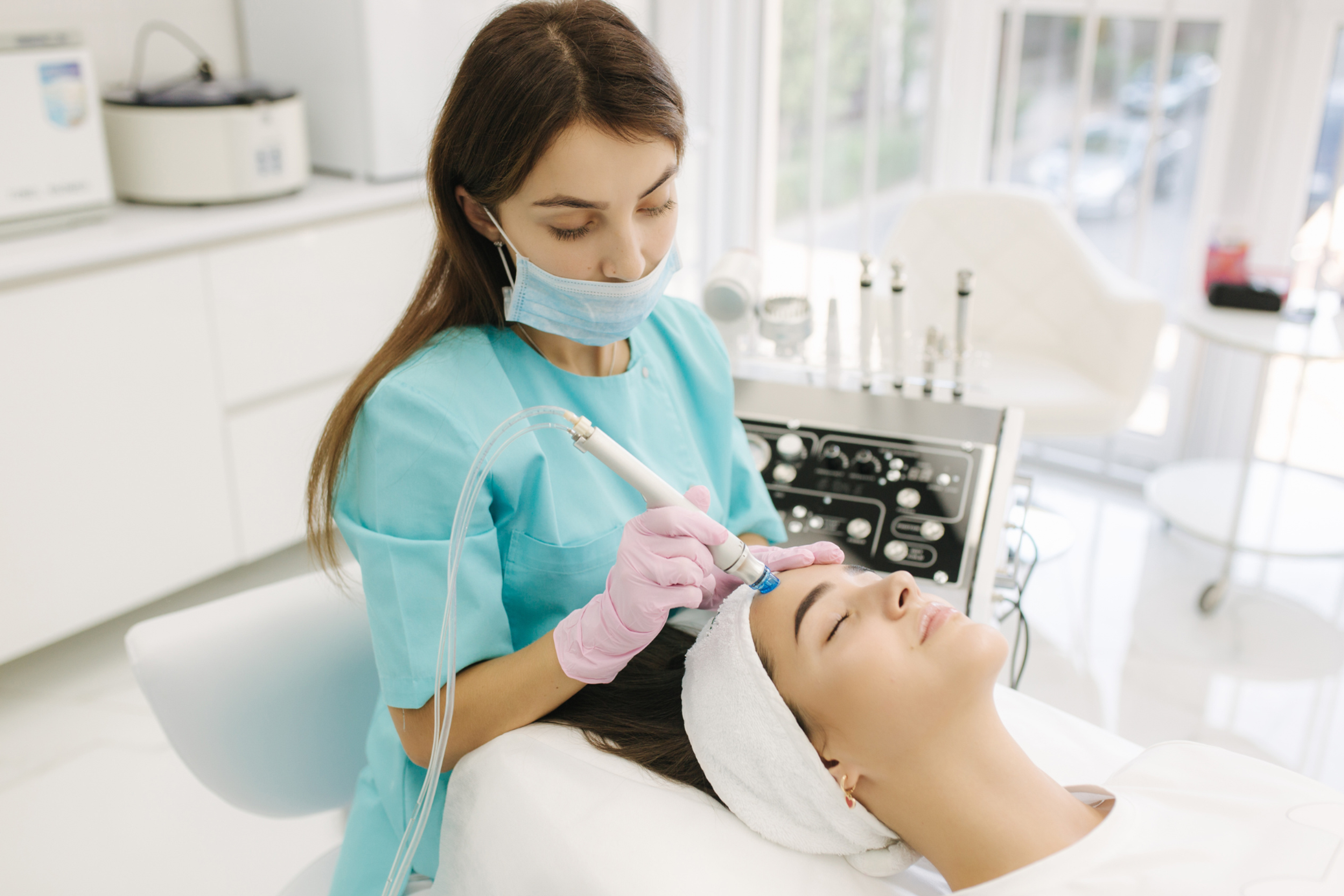The 15 Easiest Medical Schools to Get Into (2025-2026)
Having a low GPA or MCAT doesn’t mean your med school dreams are over. Explore 15 MD programs with higher acceptance rates, lower GPA/MCAT averages, and mission-driven admissions.

By Krysta F.
Your Favorite Med School Coach's Favorite Med School Coach
Posted August 5, 2025

Join a free event
Learn from top coaches and industry experts in live, interactive sessions you can join for free.
Table of Contents
Getting into medical school is hard; there’s no sugarcoating it. With average GPAs nearing 3.8 and MCAT scores pushing past 510 at top programs, many qualified pre-meds are left wondering: Is there a path forward if my stats aren’t perfect?
The answer is yes: if you apply strategically and focus on demonstrating how you’ve developed your skills and competencies in preparing to become a physician.
I have worked with hundreds of students and completed thousands of individualized advising appointments. As an equity-based higher education professional, I have over five years of experience helping medical and graduate school applicants – especially those from marginalized backgrounds – pursue their career ambitions.
In my coaching, I’ve helped students gain admission to some of the most prestigious programs in the world: Harvard, Johns Hopkins, UCLA, Duke, and others. But what I’ve learned over the years is that prestige isn’t everything. Some of the most successful, fulfilled doctors I’ve worked with didn’t go to a top 20 school. They chose programs like Central Michigan, LECOM, or Wayne State because that medical school aligned better with their goals, values, and learning style. There is no such thing as the “right” medical school; only the medical school that is right for you. Yes, your scores and experiences are part of the equation, but it also has to be somewhere you want to be geographically, a place that you feel supported emotionally and academically, and where you’re genuinely excited to begin the next chapter of your life.
I’ve said it before and I’ll say it again: getting into medical school isn’t easy. But, this guide will give you ideas of where to look for programs. This list of schools is based on real data: GPA and MCAT averages, acceptance rates, mission fit, and application flexibility. Whether you’re a non-traditional student, a career changer, or someone with a lower-than-average GPA or MCAT, this is the most tactical and comprehensive resource online for finding med schools where you have a great shot.
Every medical school on this list is fully accredited, produces board-certified physicians, and offers the training you need to launch a successful medical career. Many of these programs specialize in primary care, rural medicine, and underserved populations – areas with strong job demand and meaningful impact.
Aiming for a top school? Read: T20 Medical Schools: Acceptance Rates, MCAT Scores, & GPAs
Your medical school dreams are very much alive. Let’s dive in.
What Makes a Medical School “Easy” to Get Into?
When people talk about the “easiest” medical schools, they’re usually referring to schools that admit a higher percentage of applicants and have slightly lower academic thresholds than the most competitive medical schools. But med school admissions are nuanced, and what looks easy on paper can still require strategy to crack.
Key Admissions Metrics to Consider
GPA and MCAT Averages (With National Context)
GPA and MCAT scores are two of the most visible metrics used to screen applicants. The national average GPA for matriculants in MD programs is around 3.75, and the average MCAT score is 511.7. But some schools on this list admit students with GPAs in the 3.3–3.6 range and MCATs as low as 503–506. These aren’t bottom-tier numbers – they’re still competitive – but they do provide more wiggle room for applicants with academic blemishes or a late upward trend.
Acceptance Rates
Most U.S. MD programs admit less than 5–7% of applicants. But a handful of schools have acceptance rates in the 10–15% range or higher, making them far more attainable statistically. These schools often receive fewer applications overall, particularly if they serve specific geographic or mission-driven populations. While acceptance rate alone doesn’t tell the full story, it’s a useful directional metric when evaluating your odds.
In-State vs. Out-of-State Bias
Many public medical schools prioritize in-state applicants, with some filling 90% or more of their class from within the state. If you're a resident, your chances could be 3–5x higher than an out-of-state applicant. For borderline candidates, this can make or break your application. That’s why knowing which schools favor in-state students and applying accordingly is one of the smartest moves you can make.
Getting Into Medical School – Other Factors
Mission-Driven Schools Favoring Certain Applicant Profiles
Some schools have a strong service-oriented mission and actively recruit students who align with it. For example, programs focused on rural health, primary care, or underserved communities often look beyond stats to prioritize applicants who demonstrate commitment through life experience, volunteer work, or background. These schools are especially welcoming to non-traditional students and career changers.
Emphasis on Holistic Admissions (Life Experience, Essays, Community Service)
Med schools that use a holistic review process don’t just plug numbers into an algorithm. They evaluate the full story: personal statements, recommendation letters, clinical exposure, community engagement, and even adversity overcome. If your stats aren’t stellar but you’ve shown grit, growth, and passion, these schools will give your application a fair shake.
Newer Schools With Growing Class Sizes
Newer med schools and those expanding their class size often have more seats to fill, which means they may be more open to applicants with varied backgrounds and profiles. These programs are still building their reputations and alumni networks, but they often come with modern facilities, innovative curricula, and a genuine desire to support motivated students who might not appear top-tier on paper.
15 of the “Easiest” Medical Schools to Get Into in 2025
| School Name | Acceptance Rate | Average MCAT | Average GPA |
|---|---|---|---|
| 1. University of North Dakota School of Medicine & Health Sciences | 17-20% | 503–506 | 3.7 |
| 2. East Carolina University Brody School of Medicine | 10-13% | 505 | 3.6–3.7 |
| 3. University of New Mexico School of Medicine | 10-13% | 505 | 3.6–3.7 |
| 4. University of Mississippi Medical Center | 12% | 503–506 | 3.6 |
| 5. LSU Health Sciences Center–Shreveport | 11-12% | 506 | 3.7 |
| 6. University of Missouri–Kansas City School of Medicine | 10-12% | 505 | 3.6–3.7 |
| 7. University of Arkansas for Medical Sciences College of Medicine | 10-12% | 506 | 3.7 |
| 8. Central Michigan University College of Medicine | 10-12% | 503–506 | 3.6 |
| 9. Mercer University School of Medicine | 10-12% | 503–506 | 3.5–3.7 |
| 10. Florida State University College of Medicine | 10-12% | 505–507 | 3.7 |
| 11. Meharry Medical College | 10-12% | 503–505 | 3.5–3.6 |
| 12. Morehouse School of Medicine | 10-12% | 503–506 | 3.5–3.6 |
| 13. University of Arizona College of Medicine – Tucson | 9-11% | 507–509 | 3.7–3.8 |
| 14. Medical University of South Carolina College of Medicine | 9-10% | ~508 | 3.7 |
| 15. Wright State University Boonshoft School of Medicine | 8-10% | 504–507 | 3.6–3.7 |
1. University of North Dakota School of Medicine & Health Sciences
The University of North Dakota School of Medicine & Health Sciences (UND SMHS) is a mission-driven public medical school that focuses on training physicians to serve rural and underserved communities, especially across North Dakota and the surrounding region. Located in Grand Forks, UND SMHS is one of the oldest community-based medical schools in the U.S., offering a curriculum grounded in real-world clinical experience from year one.
UND SMHS offers one of the most accessible paths to an MD in the country, particularly for North Dakota residents. The medical school gives strong preference to in-state and regional applicants, and admitted students typically have MCAT scores in the 503–506 range and GPAs around 3.7.
UND SMHS’s acceptance rate is estimated to be between 17% and 20%, well above the national average.
Students benefit from UND’s distributed model, with clinical training across a wide network of hospitals and clinics statewide. The medical school has a strong track record of matching graduates into primary care specialties, in part due to its mission and North Dakota’s significant need for rural providers.
Class Profile – UND SMHS (Recent Data)
- Median GPA: ~3.7
- Median MCAT Score: ~505
- Acceptance Rate: ~17–20%
- Class Size: Approximately 78 students
- In-State Preference: Over 80% of seats reserved for North Dakota and WWAMI (WY, WA, AK, MT, ID) region residents
Demographics & Mission Fit
UND seeks applicants who are passionate about rural health, primary care, and serving medically underserved populations. Many accepted students are from small towns, come from first-generation or non-traditional backgrounds, and have prior experience in healthcare or community service. The admissions process values life experience and service as much as academic metrics.
For more details, visit the UND School of Medicine & Health Sciences official site.
2. East Carolina University Brody School of Medicine
The Brody School of Medicine at East Carolina University (ECU Brody) is a mission-focused public medical school dedicated to improving healthcare access across North Carolina, especially in rural and underserved communities. Located in Greenville, Brody stands out for its commitment to in-state students, primary care, and service-driven medicine.
Brody is one of the most accessible MD programs in the country for North Carolina residents. It does not accept out-of-state applicants, making the admissions pool significantly smaller and increasing chances for qualified in-state candidates. The school’s admitted students typically have MCAT scores around 505 and GPAs close to 3.6–3.7.
ECU Brody’s acceptance rate is estimated between 10–13%.
ECU Brody’s curriculum emphasizes early clinical exposure, hands-on community involvement, and a strong foundation in primary care and family medicine. The medical school consistently ranks among the top producers of family physicians in the U.S., with strong residency match outcomes in internal medicine, pediatrics, and OB/GYN as well.
Class Profile – ECU Brody School of Medicine
- Median GPA: ~3.65
- Median MCAT Score: ~505
- Acceptance Rate: ~10–13%
- Class Size: Approximately 86 students
- In-State Preference: 100% of seats are reserved for North Carolina residents
Demographics & Mission Fit
Brody seeks applicants who demonstrate a strong commitment to practicing medicine within North Carolina, particularly in underserved, rural, or economically challenged regions. Many students are first-generation college graduates, non-traditional applicants, or come from medically underserved communities. The admissions committee places high value on community service, resilience, and mission alignment.
For more details, visit the ECU Brody School of Medicine official site.
3. University of New Mexico School of Medicine
The University of New Mexico (UNM) School of Medicine, located in Albuquerque, is a public institution with a strong commitment to improving healthcare access across New Mexico, especially in rural, tribal, and underserved communities. UNM plays a central role in developing physicians who will serve the unique cultural and geographic needs of the region.
UNM gives significant preference to New Mexico residents, and the school’s admissions process values mission alignment, service experience, and cultural competency as much as academic metrics. Admitted students typically have average MCAT scores around 505 and GPAs in the 3.6–3.7 range.
UNM’s in-state acceptance rate is estimated to be 10–13%, well above the national average.
The curriculum emphasizes early clinical exposure, community-based training, and strong partnerships with Native American and Hispanic communities across the Southwest. UNM graduates are highly regarded for their preparation in primary care, family medicine, and rural health.
Class Profile – UNM School of Medicine (Recent Data)
- Median GPA: ~3.65
- Median MCAT Score: ~505
- Acceptance Rate: ~10–13% (in-state)
- Class Size: Approximately 100 students
- In-State Preference: Roughly 85–90% of seats reserved for New Mexico residents
Demographics & Mission Fit
UNM actively seeks applicants who reflect New Mexico’s diverse population. The admissions committee strongly favors candidates from rural, economically disadvantaged, or underrepresented backgrounds who are committed to practicing within the state. Many accepted students are first-generation college graduates or have significant life and service experience.
For more details, visit the University of New Mexico School of Medicine official site.

4. University of Mississippi Medical Center
The University of Mississippi Medical Center (UMMC) is Mississippi’s only medical school and a critical driver of healthcare access across the state. Located in Jackson, UMMC focuses heavily on serving rural and underserved communities – especially in the Mississippi Delta – and offers a mission-driven path into medicine for students who are passionate about primary care and public health.
Unlike elite private institutions, UMMC has a more accessible admissions profile. It gives strong preference to Mississippi residents and applicants who demonstrate a commitment to practicing in-state after graduation. With average accepted MCAT scores in the 503–506 range and GPAs closer to 3.6, UMMC stands out as one of the “easiest” medical schools to get into, particularly for in-state applicants.
UMMC’s acceptance rate hovers around 12%, significantly higher than the national average for MD programs.
But don’t mistake accessibility for a lack of rigor. UMMC graduates consistently match into solid residency programs, especially in primary care, family medicine, internal medicine, and OB/GYN. The school emphasizes clinical readiness, service learning, and hands-on experience through partnerships with local hospitals and rural clinics across Mississippi.
Class Profile – UMMC School of Medicine (Recent Data)
- Median GPA: ~3.6
- Median MCAT Score: ~504
- Acceptance Rate: ~12%
- Class Size: Approximately 165 students
- In-State Preference: Over 85% of seats go to Mississippi residents
Demographics & Mission Fit
UMMC attracts a diverse range of students from across Mississippi. The program places a premium on applicants with strong ties to rural communities, underrepresented backgrounds, and those with demonstrated service to the state. Many students are first-generation college students or come from medically underserved areas.
For more details, visit the UMMC School of Medicine official site.
5. LSU Health Sciences Center–Shreveport
The LSU Health Sciences Center–Shreveport School of Medicine is one of three public medical schools in Louisiana and a key contributor to the state’s physician workforce. Located in northwest Louisiana, the school emphasizes clinical training, community engagement, and producing doctors who will serve in-state, particularly in rural and underserved regions.
LSU Shreveport has a strong in-state preference, and Louisiana residents make up the vast majority of each incoming class. For qualified in-state applicants, the admissions criteria are more accessible than many private or top-tier public med schools. Recent classes have reported average MCAT scores around 506 and GPAs near 3.7.
LSU’s estimated acceptance rate is around 11–12% for in-state students.
Students benefit from early clinical exposure, robust hospital partnerships, and a cost-effective path to the MD. The school also offers a strong track record of residency placement across primary care, general surgery, anesthesiology, and internal medicine.
Class Profile – LSU Shreveport School of Medicine (Recent Data)
- Median GPA: ~3.7
- Median MCAT Score: ~506
- Acceptance Rate: ~11–12% (in-state)
- Class Size: Approximately 150 students
- In-State Preference: Over 90% of students are Louisiana residents
Demographics & Mission Fit
LSU Shreveport actively recruits students with a strong commitment to practicing in Louisiana, especially in regions with physician shortages. The school values clinical experience, grit, and a service-minded outlook, making it a good fit for applicants from public universities, small towns, or non-traditional backgrounds.
For more details, visit the LSU Health Sciences Center–Shreveport official site.
6. University of Missouri–Kansas City School of Medicine
The University of Missouri–Kansas City (UMKC) School of Medicine offers a unique and accessible route to becoming a physician, especially through its accelerated 6-year BA/MD program, which allows students to enter medical school directly from high school. Located in the heart of Kansas City, UMKC emphasizes early clinical exposure, community partnerships, and producing well-rounded physicians equipped to serve diverse populations.
UMKC is known for being more flexible in its admissions, particularly for Missouri residents and students applying to its combined BA/MD track. For traditional MD applicants, average MCAT scores hover around 505, and GPAs fall in the 3.6–3.7 range.
UMKC’s overall acceptance rate is estimated at 10–12%, but it can be significantly higher for in-state students and BA/MD applicants who meet academic benchmarks early on.
One of UMKC’s key strengths is its “docent” system, which pairs students with faculty mentors and integrates clinical training from the very first semester. Students graduate with thousands of hours of hands-on patient care experience, giving them a competitive edge in residency.
Class Profile – UMKC School of Medicine (Recent Data)
- Median GPA: ~3.6–3.7
- Median MCAT Score: ~505
- Acceptance Rate: ~10–12%
- Class Size: Approximately 125–130 students
- In-State Preference: High preference for Missouri residents and regional applicants
Demographics & Mission Fit
UMKC looks for students who value teamwork, community engagement, and a patient-centered approach to medicine. The school is especially supportive of students from underrepresented or economically disadvantaged backgrounds, and its accelerated program appeals to those seeking a direct path into clinical training with fewer years in traditional classroom settings.
For more details, visit the UMKC School of Medicine official site.

7. University of Arkansas for Medical Sciences College of Medicine
The University of Arkansas for Medical Sciences (UAMS) College of Medicine is the only medical school in the state, playing a vital role in training physicians to serve Arkansas’s rural and medically underserved communities. Located in Little Rock, UAMS offers a strong clinical education through its robust health system and statewide partnerships with hospitals and clinics.
UAMS gives strong preference to Arkansas residents, and most of its students are in-state applicants. For these candidates, the admissions criteria are relatively accessible. Recent matriculants have average MCAT scores around 506 and GPAs in the 3.7 range.
UAMS’s in-state acceptance rate is estimated between 10–12%. Out-of-state applicants are accepted in limited numbers and must be highly competitive.
UAMS offers early clinical exposure, research opportunities, and dedicated support for students interested in primary care, family medicine, and rural health. Its graduates have strong residency match outcomes, especially within Arkansas and neighboring states.
Class Profile – UAMS College of Medicine (Recent Data)
- Median GPA: ~3.7
- Median MCAT Score: ~506
- Acceptance Rate: ~10–12% (in-state)
- Class Size: Approximately 175 students
- In-State Preference: Over 85% of students are Arkansas residents
Demographics & Mission Fit
UAMS prioritizes applicants with strong ties to Arkansas, especially those from rural backgrounds or underserved areas. Many students are first-generation college graduates, and the admissions process places a strong emphasis on community service, life experience, and a desire to practice within the state after graduation.
For more details, visit the University of Arkansas for Medical Sciences official site.
8. Central Michigan University College of Medicine
The Central Michigan University (CMU) College of Medicine is a mission-driven MD program established in 2013 to address physician shortages across Michigan in underserved rural and urban communities. Located in Mount Pleasant, CMU emphasizes community-based medical education, early clinical exposure, and a strong focus on primary care.
CMU’s admissions process is relatively accessible, especially for Michigan residents. The school gives strong in-state preference, and accepted students typically have MCAT scores in the 503–506 range and GPAs around 3.6.
CMU’s estimated acceptance rate for in-state applicants is around 10–12%, making it one of the more attainable programs for qualified candidates aligned with the school’s mission.
Students at CMU benefit from a distributed clinical training model, rotating through affiliated hospitals and clinics across mid- and northern Michigan. The program has a strong track record in placing graduates into primary care residencies, including family medicine, internal medicine, pediatrics, and psychiatry.
Class Profile – CMU College of Medicine (Recent Data)
- Median GPA: ~3.6
- Median MCAT Score: ~504
- Acceptance Rate: ~10–12% (in-state)
- Class Size: Approximately 104 students
- In-State Preference: Over 80% of students are Michigan residents
Demographics & Mission Fit
CMU looks for applicants who are passionate about serving underserved populations within Michigan. The admissions committee places strong emphasis on community service, leadership, and a demonstrated commitment to healthcare access and equity. Many students come from rural or first-generation backgrounds, and the school actively supports non-traditional and mission-fit candidates.
For more details, visit the Central Michigan University College of Medicine official site.
9. Mercer University School of Medicine
Mercer University School of Medicine (MUSM), with campuses in Macon, Savannah, and Columbus, is a Georgia-based medical school designed specifically to train physicians who will serve the state’s rural and underserved populations. Founded on a mission of community impact, MUSM exclusively accepts Georgia residents, making it a uniquely targeted and accessible MD program for in-state applicants.
Mercer’s admissions process places high value on service, character, and alignment with its mission. Admitted students generally have MCAT scores around 503–506 and GPAs in the 3.5–3.7 range.
With a relatively high in-state acceptance rate, estimated at 10–12%, Mercer is one of the “easiest” medical schools to get into for Georgia residents who demonstrate a strong fit.
Students are exposed to clinical training early, and the curriculum integrates hands-on, community-based medical education across the school’s three campuses. MUSM graduates consistently match into primary care fields, particularly family medicine, internal medicine, and pediatrics, aligning with the school’s goal to increase Georgia’s physician supply.
Class Profile – Mercer University School of Medicine (Recent Data)
- Median GPA: ~3.6
- Median MCAT Score: ~504
- Acceptance Rate: ~10–12% (in-state only)
- Class Size: Approximately 125 students
- In-State Preference: 100% of seats reserved for Georgia residents
Demographics & Mission Fit
Mercer seeks students from across Georgia, especially those from rural or medically underserved areas, who demonstrate a strong desire to return and practice in the state. The admissions committee values life experience, service orientation, and mission alignment over perfect academic metrics. Many students are first-generation college graduates, non-traditional applicants, or have deep ties to the communities they hope to serve.
For more details, visit the Mercer University School of Medicine official site.
10. Florida State University College of Medicine
The Florida State University (FSU) College of Medicine, located in Tallahassee with regional campuses across the state, was established with a mission to serve Florida’s elderly, rural, minority, and underserved populations. Its unique community-based model emphasizes continuity of care, early clinical exposure, and real-world medical practice from day one.
FSU gives strong preference to Florida residents, and the admissions process takes a holistic approach, valuing character, service, and mission alignment as much as academic performance. Recent incoming classes report average MCAT scores in the 505–507 range and GPAs around 3.7.
FSU has an estimated in-state acceptance rate of 10–12%. Out-of-state admission is rare and highly competitive.
Students spend their third and fourth years in regional campuses across Florida, gaining experience in community-based clinical settings. FSU is nationally recognized for producing a high percentage of graduates who enter primary care, family medicine, and OB/GYN.
Class Profile – FSU College of Medicine (Recent Data)
- Median GPA: ~3.7
- Median MCAT Score: ~506
- Acceptance Rate: ~10–12% (in-state)
- Class Size: Approximately 120 students
- In-State Preference: Over 95% of seats go to Florida residents
Demographics & Mission Fit
FSU actively recruits students from underrepresented and medically underserved backgrounds who show a strong desire to practice in Florida. Many students are first-generation college graduates or non-traditional applicants. The admissions committee values service, leadership, resilience, and a demonstrated commitment to improving health equity across the state.
For more details, visit the Florida State University College of Medicine official site.
11. Meharry Medical College
Meharry Medical College, located in Nashville, Tennessee, is one of the nation’s oldest and most respected historically Black medical schools. Founded in 1876, Meharry has a long-standing mission of increasing diversity in medicine and addressing health disparities in underserved communities across the U.S., particularly in Black and rural populations.
Meharry uses a mission-focused, holistic admissions process, making it an accessible option for students with slightly lower academic stats who have a strong commitment to service and health equity. Recent entering classes report average MCAT scores in the 503–505 range and GPAs around 3.5–3.6.
Meharry’s estimated acceptance rate is 10–12%, and it welcomes applicants from all 50 states, with no in-state bias.
Students benefit from early clinical exposure, small class sizes, and strong support networks. Meharry’s graduates have a strong record of matching into primary care, internal medicine, OB/GYN, and other mission-aligned specialties.
Class Profile – Meharry Medical College (Recent Data)
- Median GPA: ~3.55
- Median MCAT Score: ~504
- Acceptance Rate: ~10–12%
- Class Size: Approximately 105 students
- In-State Preference: No specific in-state bias; national applicant pool
Demographics & Mission Fit
Meharry seeks applicants from diverse and often underrepresented backgrounds who are committed to practicing in underserved areas. Many students are first-generation college graduates, come from minority communities, or have a demonstrated passion for health equity, public health, and primary care. Community service, resilience, and leadership are highly valued in the admissions process.
For more details, visit the Meharry Medical College official site.

12. Morehouse School of Medicine
Morehouse School of Medicine (MSM), located in Atlanta, Georgia, is a private, historically Black medical school with a national reputation for advancing health equity and preparing physicians to serve underserved communities. Since its founding in 1975, Morehouse has focused on increasing diversity in medicine and addressing disparities in care in African American, rural, and low-income populations.
Morehouse uses a holistic admissions process and strongly values applicants with life experience, service backgrounds, and a demonstrated commitment to the school’s mission. Accepted students typically have MCAT scores in the 503–506 range and GPAs around 3.5–3.6, making it one of the more accessible MD programs in the country.
MSM’s estimated acceptance rate is 10–12%, and the school draws applicants from across the U.S., with no state residency requirement.
MSM’s curriculum combines early clinical training, small class sizes, and strong mentorship. The school has one of the highest rates of graduates entering primary care fields and consistently matches students into residency programs that align with its mission.
Class Profile – Morehouse School of Medicine (Recent Data)
- Median GPA: ~3.55
- Median MCAT Score: ~504
- Acceptance Rate: ~10–12%
- Class Size: Approximately 100 students
- In-State Preference: No in-state residency preference; national recruitment
Demographics & Mission Fit
Morehouse seeks students from underrepresented and underserved backgrounds who are committed to improving healthcare access and outcomes. Many accepted students are first-generation college graduates, career changers, or individuals with strong community service and public health experience. The admissions committee values mission alignment, resilience, and leadership in health-related fields.
For more details, visit the Morehouse School of Medicine official site.
13. University of Arizona College of Medicine – Tucson
The University of Arizona College of Medicine – Tucson is a public medical school with a strong focus on serving Arizona’s diverse populations, including Native American, Hispanic, and rural communities. Located in southern Arizona, the school emphasizes community health, primary care, and research that addresses health disparities across the Southwest.
Arizona residents receive strong preference in admissions, and the medical school uses a holistic review process that considers life experience, background, and mission alignment alongside academic metrics. Admitted students typically have MCAT scores around 507–509 and GPAs in the 3.7–3.8 range, though in-state applicants with slightly lower scores may be competitive.
Tucson’s in-state acceptance rate is estimated at 9–11%, higher than the national average.
The curriculum integrates early clinical exposure, interprofessional education, and research opportunities. Students rotate through a variety of urban, rural, and tribal health settings, preparing them to meet the state’s most pressing healthcare needs. The medical school is also a national leader in producing graduates who enter primary care and underserved area placements.
Class Profile – UA College of Medicine – Tucson (Recent Data)
- Median GPA: ~3.75
- Median MCAT Score: ~508
- Acceptance Rate: ~9–11% (in-state)
- Class Size: Approximately 120 students
- In-State Preference: Over 80% of seats reserved for Arizona residents
Demographics & Mission Fit
The Tucson campus values applicants who reflect Arizona’s diverse communities and are committed to improving health outcomes in medically underserved areas. The admissions process favors candidates with strong service records, rural or underrepresented backgrounds, and an interest in primary care or public health. Many students are first-generation college graduates or career changers.
For more details, visit the University of Arizona College of Medicine – Tucson official site.
14. Medical University of South Carolina College of Medicine
The Medical University of South Carolina (MUSC) College of Medicine, located in Charleston, is the state’s oldest medical school and a leading academic health center in the Southeast. MUSC is known for its strong clinical training, robust research opportunities, and deep commitment to improving health outcomes across South Carolina, particularly in rural and underserved areas.
MUSC gives strong preference to South Carolina residents, who make up the vast majority of each incoming class. For in-state applicants, the admissions process is notably more accessible, with average MCAT scores around 508 and GPAs close to 3.7.
MUSC’s overall acceptance rate is approximately 9–10%, but in-state acceptance rates are significantly higher.
The medical school offers a well-rounded curriculum with early clinical exposure and numerous opportunities for research and service. Its strong partnerships with hospitals and community clinics statewide help prepare students for successful residency placements in both primary care and competitive specialties.
Class Profile – MUSC College of Medicine (Recent Data)
- Median GPA: ~3.7
- Median MCAT Score: ~508
- Acceptance Rate: ~9–10% overall
- Class Size: Approximately 180 students
- In-State Preference: Roughly 85% of seats go to South Carolina residents
Demographics & Mission Fit
MUSC prioritizes students who reflect South Carolina’s diverse communities and demonstrate a commitment to serving the state. The admissions committee values life experience, service to underserved populations, and leadership in healthcare settings. Many students come from small towns, underrepresented backgrounds, or are first-generation college graduates.
For more details, visit the MUSC College of Medicine official site.

15. Wright State University Boonshoft School of Medicine
The Boonshoft School of Medicine at Wright State University, located in Dayton, Ohio, offers a mission-driven medical education focused on community service, primary care, and training physicians to serve diverse and underserved populations. One of the “easiest” medical schools to get into, Boonshoft is a community-based medical school, meaning students train across multiple hospitals and healthcare systems, gaining broad exposure to real-world clinical environments from early on.
Boonshoft is known for its holistic admissions process and accessibility for in-state students. The medical school values applicants with strong interpersonal skills, leadership experience, and a demonstrated commitment to service particularly with those who may not have perfect academic metrics. Recent incoming classes have average MCAT scores in the 504–507 range and GPAs around 3.6–3.7.
Boonshoft’s estimated acceptance rate is around 8–10%, with Ohio residents receiving preference.
The curriculum integrates early clinical training with a focus on population health, health disparities, and interprofessional collaboration. Boonshoft consistently matches graduates into strong residency programs, especially in family medicine, internal medicine, pediatrics, and emergency medicine.
Class Profile – Boonshoft School of Medicine (Recent Data)
- Median GPA: ~3.65
- Median MCAT Score: ~505
- Acceptance Rate: ~8–10%
- Class Size: Approximately 120 students
- In-State Preference: Strong preference for Ohio residents
Demographics & Mission Fit
Wright State seeks med school applicants who are passionate about community health and patient advocacy. Many admitted students are non-traditional applicants, first-generation college graduates, or come from underserved backgrounds. The admissions committee prioritizes character, motivation, and service-oriented experiences as much as academic performance.
For more details, visit the Wright State Boonshoft School of Medicine official site.
Tips to Maximize Your Chances at These Schools
Getting into one of these more accessible medical schools still requires a thoughtful strategy. If your GPA or MCAT is below average, the key is to maximize every other part of your application and apply smartly. Here’s how to boost your odds.
1. Focus on the mission fit.
Many of the schools on this list have a clear mission: to serve rural, underserved, or underrepresented populations. If your background, values, or career goals align with that mission, make it clear in your personal statement, secondaries, and interviews. Schools like ECU Brody, Mercer, and Meharry specifically seek applicants who want to work in primary care or improve healthcare access in their communities. Show them you’re not just applying because of the stats, you’re applying because you belong.
2. Strengthen the non-quantitative parts of your application.
If your numbers aren’t perfect, everything else needs to shine. Focus on helping the committee to understand how you have developed the AAMC competencies (a list that has been adopted by DO schools, too!) by centering these in when talking about the following experiences in your personal statement and activities descriptions:
- Clinical experience: Shadowing, scribing, EMT, CNA, or hospital volunteering
- Research: Not mandatory, but a solid bonus if relevant to your goals
- Service: Long-term involvement in community health, tutoring, or outreach shows dedication
- Letters of recommendation: Make sure they are personal, enthusiastic, and specific
Admissions committees at these schools often take a holistic approach, and strong life experiences, character, and resilience can outweigh modest stats.
3. Consider DO programs.
Don’t overlook osteopathic (DO) medical schools. DO programs often have more flexible admissions standards, with average MCATs and GPAs slightly lower than MD programs. They also emphasize whole-person care, primary care, and hands-on treatment techniques like OMT (osteopathic manipulative treatment).
Many DO grads match into the same residency programs as MDs, and the gap between the two degrees continues to narrow. If your goal is to become a practicing physician and you're open to a slightly different training philosophy, DO schools can be an excellent option with strong career outcomes and more accessible entry points.
How to Build a Smart School List (With Lower Stats)
Even among schools with lower stats, you can’t apply randomly. Strategy matters. If your GPA or MCAT is below the national average, building a smart, tailored school list can significantly increase your chances of acceptance. Here’s how to do it effectively.
Prioritize In-State and Regional Public Schools
Many public med schools give strong preference to in-state applicants, with some reserving over 85% of their seats for residents. If you’re a resident of a state with a public medical school, that program should likely be at the top of your list, even if your stats are below average. Also look for regional agreements like WWAMI or SREB that expand in-state privileges across nearby states.
Expert tip: Use the AAMC’s MSAR tool to check how many out-of-state applicants are accepted at each school.
Use the Mission as a Filter
Mission-driven schools – especially those focused on primary care, rural health, or underserved populations – are often more flexible with academic metrics. If you can show your values align through your experiences, secondaries, and interviews, you may stand out even with lower stats.
Look for phrases like “community-based,” “underserved,” “holistic admissions,” or “rural pipeline” on school websites while researching medical schools. THEN, be sure to highlight your authentic commitment to these values in your personal statement, activities descriptions and interviews.
Include a Mix of Safety, Match, and Reach Schools
Just like undergrad applications, your med school list should be balanced:
- Safety: Schools where your GPA and MCAT are at or above the 75th percentile
- Match: Schools where you're around the median
- Reach: Schools slightly out of range but aligned with your story or mission
Consider Osteopathic (DO) Programs
If your numbers fall significantly below MD medians, DO schools can be excellent, career-validating options. They often offer:
- Lower GPA/MCAT thresholds
- A more holistic review process
- A strong emphasis on primary care and underserved communities
- Full U.S. medical licensure and competitive residency matches
Bonus: Some DO schools use rolling admissions, so applying early boosts your odds.
Read: The 25 Best Osteopathic Medical Schools (2025)
Limit Total Applications Based on Bandwidth and Budget
Most applicants apply to 15–25 schools, but quality matters more than quantity. Each school requires secondary essays, fees, and interview prep, so choose programs where you can authentically show fit. Don’t waste applications on schools where you don’t meet residency requirements or where your chances are unrealistically low.
Bottom Line: A smart school list isn’t just about GPA and MCAT; it’s about understanding each program’s priorities and showing them you belong. Focus on mission, data, and differentiation, and you’ll give yourself the best shot – even with imperfect stats.
Read: How Many Medical Schools Should You Apply To? Experts Weigh In
What If You Don’t Get Into Medical School?
Not getting in – especially on your first try – can feel crushing. But it’s also common, and it’s far from the end of the road. Many successful doctors didn’t get accepted on their first attempt. The key is to treat it not as failure, but as feedback – and to respond strategically. Here’s how to move forward.
1. Assess your application honestly – what were the biggest red flags?
Start with a post-cycle analysis:
- Were your GPA and MCAT below the medical school’s 10th percentile?
- Did you apply too narrowly or ignore in-state preferences?
- Was your personal statement generic, or did it fail to clearly show mission fit?
- Did you submit late, rush secondaries, or fail to secure strong letters?
If you’re unsure where you went wrong, I’d be happy to book a 1:1 application review session with you. Together, we can take a purpose-driven approach to your application process, highlighting your skills and interests in a way that demonstrates alignment with the qualities and competencies that schools are looking for.
2. Strengthen the weakest areas.
Once you’ve identified gaps, take action:
- Low GPA? Consider a post-bacc or Special Master’s Program (SMP) to prove academic readiness.
- Low MCAT? Build a study schedule and retake with a focused prep strategy.
- Weak clinical or service experience? Take a gap year to shadow, scribe, volunteer, or practice clinical skills in a real-world setting.
- Shaky story or poor school list? Rework your narrative and apply more strategically, using tools like the MSAR.
Read: Gap Year Before Medical School: Pros & Cons, Timeline, and How to Make the Most of It
3. Reapply with a stronger, more focused plan.
If you’re reapplying, show growth. Admissions committees want to see that you’ve:
- Reflected on why you didn’t get in
- Taken concrete steps to improve
- Deepened your commitment to medicine
- Refined your school list to match your strengths
Most importantly, avoid repeating the same mistakes. Many prospective students get in on their second or even third try. Persistence and course-correction matter.
4. Consider alternative routes/degrees.
If you weren’t already applying to osteopathic medicine programs, this is the time to take a closer look. DO schools often provide a more holistic review, accept lower GPA/MCAT thresholds, and align strongly with mission-driven students focused on primary care and community health.
Read: AACOMAS Application Timeline: Key Dates and Tips and 100+ PA Schools That Don't Require GRE: A Comprehensive List
Alternatively, if you’re open to other options, you can:
- Apply to Caribbean medical schools (with caution and research)
- Explore other healthcare roles (PA, NP, public health, etc.)
- Spend a year gaining meaningful experience before reapplying
5. Stay Grounded and Stay in the Game
Rejection doesn’t mean you’re not meant to be a doctor. It means you’re facing a process that’s competitive, nuanced, and unforgiving, but still beatable with the right game plan.
If you stay focused, honest about your weaknesses, and committed to the path, your second attempt could be the one that launches your career in medicine. Plenty of people have started as underdogs and gone on to lead, heal, and change lives. The key is not giving up.
If you’re not sure how to move forward, I’m happy to help! Book a free intro call with me and we can talk through your background and goals.
Strategy Eats Stats For Breakfast
As I’ve said, while this list highlights the “easiest” medical schools to get into, it’s important to remember that no medical school is truly “easy.” While the schools in this list may offer you a greater opportunity for admission, every program is still rigorous, selective, and demanding – for good reason. The real key isn’t finding a shortcut, but finding the schools where you genuinely fit the mission, align with the values, and can clearly demonstrate why you belong.
Focus on what makes you stand out, whether that’s a unique life experience, a strong service background, or a clear commitment to primary care or underserved communities. These are the factors that can move the needle, even if your stats aren’t perfect.
Above all, don’t give up. Many great physicians started with average numbers, non-traditional paths, or rejections along the way. If you stay focused, strategic, and authentic in your application journey, you absolutely can get in and thrive.
Work With Me
I’ve helped hundreds of students get into MD and DO programs, PA school, dental school, and graduate programs in the sciences. Whether you’re aiming for a top-tier institution or one of the “easiest” medical schools to get into, the goal is the same: finding the right fit and telling your story with clarity, confidence, and purpose.
As a first-generation college student myself, I understand how overwhelming this process can feel. You might be second-guessing your stats, your background, or your path – but here’s what I know: you are more ready than you think. And with the right guidance, you can put together an application that highlights your strengths, your story, and your alignment with what schools are actually looking for.
If you’re ready to take a thoughtful, mission-driven approach to your application, I’d love to support you. Let’s build a strategy, refine your narrative, and get you closer to wearing that white coat.
Book a free intro call with me here – I can’t wait to hear your story.
More resources:
- The Different Types of Medical Careers – and Which One is Right for You
- The Best 50+ Free Resources for the MCAT Exam
- The Ultimate Guide to the Medical School Application
- Medical School Prerequisites: Courses, Work Experience, Test Scores, and Everything Else You Need to Get In
- Medical School Letter of Intent: What It Is & How to Write One (With Examples)
- Medical School Application Timeline: The Ultimate Guide
The “Easiest” Medical Schools to Get Into – FAQs
What is the lowest GPA or MCAT accepted at medical schools?
- There’s no official cutoff across all programs, but some of the “easiest” med schools to get into have accepted applicants with GPAs as low as 2.8–3.2 and MCAT scores in the 490–500 range, particularly if those candidates showed strong upward trends, exceptional service, or mission alignment. That said, most successful applicants to MD programs still have GPAs above 3.5 and MCATs above 503. For prospective students with borderline stats, the key is identifying schools that emphasize holistic review and being strategic when researching medical schools.
What’s the difference between MD and DO programs?
- MD programs grant the traditional Doctor of Medicine degree, while DO programs grant the Doctor of Osteopathic Medicine degree. Both lead to full medical licensure in the U.S. and offer similar clinical training, but DO programs emphasize whole-person care, preventive medicine, and hands-on techniques like osteopathic manipulative treatment (OMT). DO schools also tend to have more flexible admissions criteria, which is why many prospective students researching the “easiest” med schools include them in their list. Today, DO graduates match into nearly all of the same residency programs as MDs and are especially well-represented in primary care fields. Choosing between the two depends more on your educational philosophy and goals than on prestige alone.
What is osteopathic medicine, and how is it different from allopathic care?
- Osteopathic medicine is a distinct branch of U.S. medical practice that combines traditional diagnostic and treatment methods with a focus on holistic, patient-centered care. DOs are trained to view the body as an integrated system and use OMT to diagnose and treat illness. Many schools of osteopathic medicine emphasize rural health, underserved communities, and primary care, which aligns with the missions of some of the “easiest” med schools to get into. For prospective students who value hands-on care and patient relationships, osteopathic medicine offers a rewarding path. And since most schools of osteopathic medicine also accept applicants with slightly lower MCATs and GPAs, they’re a smart option for students looking for more attainable entry points.
How are medical school admissions decisions made?
- Medical school admissions committees review applications holistically. While GPA and MCAT are essential, they also evaluate personal statements, recommendation letters, clinical and research experience, community service, and interview performance. Many of the “easiest” medical schools to get into explicitly look for alignment with their mission, usually around primary care or serving underserved populations. If you’re researching medical schools, pay attention to how each program defines its mission and what types of applicants it favors. Medical school admissions is about more than numbers; it's about showing you’re a strong fit and ready to practice clinical skills in real-world settings.
Is the MSAR Worth It?
- Yes – for most MD applicants, the MSAR (Medical School Admission Requirements) is absolutely worth the $28 annual fee. It gives you full access to detailed profiles for every accredited MD school in the U.S., including admissions data, GPA and MCAT ranges, mission statements, class demographics, prerequisites, and more. If you’re building your school list or comparing programs, it’s one of the most valuable tools available for making informed, strategic decisions.
Can out-of-state students get into public med schools?
- Yes, but it depends on the school. Many public medical schools strongly favor in-state residents. Some even reserve 85–100% of their seats for in-state students. That means out-of-state students often face stiffer competition and need stronger academic credentials or a compelling mission fit. When researching medical schools, always check residency data. If you’re an out-of-state student, prioritize schools that accept a larger percentage of non-residents or have regional agreements (such as WWAMI or Southern Regional Education Board programs).
Is attending medical school worth it?
- Yes – for most people, attending medical school is absolutely worth it. It requires a significant financial, emotional, and time investment, but the long-term rewards include job security, high earning potential, and the opportunity to make a meaningful impact. However, it’s critical that prospective students are realistic about the demands of the profession. You’ll need to dedicate years to rigorous academics, practice clinical skills in high-pressure environments, and stay committed through uncertainty. But if you’re passionate about healthcare and helping others, attending medical school remains one of the most fulfilling career paths available. Read: Is Med School Worth It? Weighing the Pros and Cons
What’s the difference between a private medical school and a public one?
- A private medical school is funded primarily through tuition and private sources, while public schools receive state funding. As a result, private medical schools often charge higher tuition and offer fewer in-state tuition discounts. However, they may have more flexibility in admissions, accepting more out-of-state students or emphasizing mission over residency. When choosing a particular medical school, consider cost, curriculum style, support services, and how well the program aligns with your goals. Some of the “easiest” med schools to get into are public, especially if you’re an in-state applicant, but some private medical schools also offer mission-driven admissions that make them more accessible to non-traditional applicants.
Are there med schools that don’t require the MCAT?
- Yes, but they’re rare. A few combined BA/MD or BS/MD programs allow students to matriculate without taking the MCAT, but these are competitive and typically only open to high-achieving undergraduates already enrolled at affiliated institutions. Almost all standalone MD and DO programs require the MCAT as a standardized measure. That said, some schools offer MCAT waivers in exceptional cases (e.g., COVID-era disruptions), but these are not the norm. If the MCAT is a major hurdle, some prospective students choose to focus on osteopathic medicine or consider post-bacc programs to strengthen their academic profile before reapplying.
Can I get into med school with a 2.8 GPA?
- It’s difficult, but not impossible. A 2.8 GPA will put you well below the average for most MD programs, but you may still have a chance if you have the following. If you’re in this boat, researching medical schools that truly emphasize holistic admissions and mission fit is critical. Focus on telling your story, proving your readiness, and showing exactly how you’ve grown.
- You show a strong upward trend
- You ace the MCAT (510+)
- You have outstanding clinical, research, or service experiences
- You apply to osteopathic medicine programs with holistic review
- You complete a post-bacc or SMP (special master’s program) to boost your academic record
Are Caribbean med schools worth it?
- Caribbean med schools can offer a second chance for prospective students who’ve struggled with GPA or MCAT scores, but they come with significant tradeoffs. These schools generally have less competitive admissions, but lower residency match rates, limited clinical rotation access, and fewer support systems than U.S. schools. If you’re unable to get into U.S.-based MD or DO programs, a Caribbean school might be a viable option, but exhaust every possibility stateside first. Consider osteopathic medicine, post-bacc programs, or even reapplying with a stronger application. For many students, that path is ultimately more rewarding and leads to better long-term outcomes.
How do I stand out with a low GPA or MCAT?
- If your stats are on the lower end, you need to differentiate yourself in every other area. Ultimately, schools want to admit people who will succeed in medical school, contribute to their mission, and be outstanding future physicians. Show them you’re that person – the numbers don’t tell the full story. Focus on:
- Sustained clinical experience with strong letters of recommendation
- Community service or advocacy in underserved populations
- A compelling personal statement that connects your background to your goals
- Demonstrated ability to overcome adversity and grow
- Strategic school selection, prioritizing the “easiest” med schools and those known for holistic review

Written by Krysta
5.0
(45)
Krysta's coaching approach prioritizes story-telling, demonstrating fit and alignment via competencies associated with graduate and professional school program. She has completed thousands of advising appointments with college students and young alumni, and yet still takes an individualized approach to each and every applicant that she works with, finding the motivations and experiences that bring out their best qualities, making their applications stand apart from the crowd. As an equity-based higher educational professional with expertise in student success and alumni engagement, Krysta leads career education efforts in a science-focused residential college at a large R1 University. Through strategic collaboration, and with a keen focus on inclusivity and equitable engagement, Krysta has created and implemented innovative programming both in and out of the classroom, identifying opportunities to combine resources and networks with campus partners in a way that supports student success. Most recently, her endeavors have included developing short and long-term alumni mentorship programs, primarily for pre-med and science students, as well as implementing career education into the core science curriculum. This work places a significant emphasis on improving access to career resources and mentorship for all students, especially those from marginalized backgrounds. In addition to creating and executing these programs, Krysta co-leads a research team which seeks to better understand how incorporating career education into the core curriculum impacts students’ sense of self-efficacy, STEM Identity, and sense of belonging, all of which contribute to retention.
Krysta has helped clients get into organizations like:
Browse hundreds of expert coaches
Leland coaches have helped thousands of people achieve their goals. A dedicated mentor can make all the difference.


















